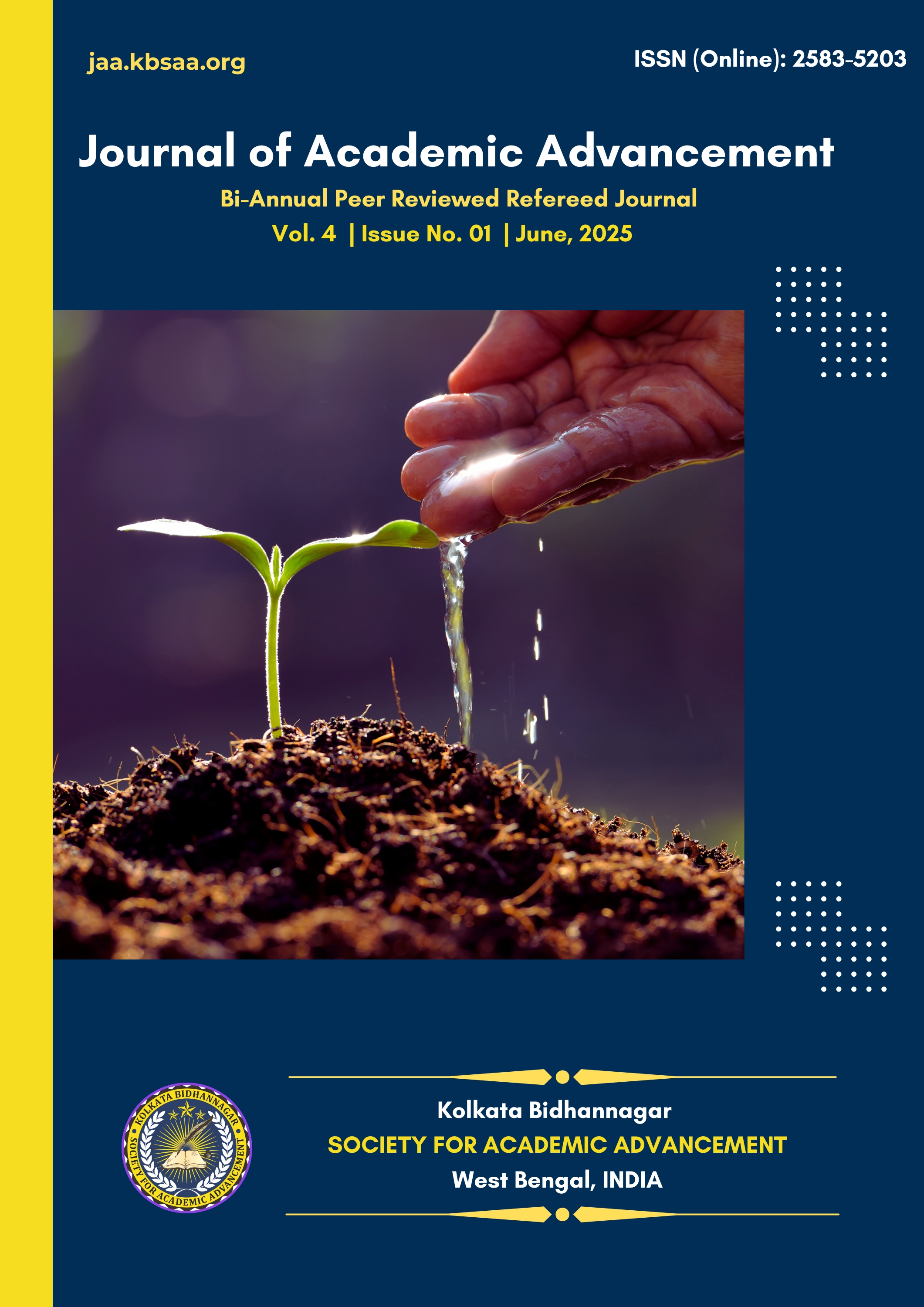Digital Marketing Trends of West Bengal in the Endemic Era
DOI:
https://doi.org/10.58574/jaa.2024.v4.i1.13Keywords:
Affordability, Customers’ Online Purchase Intention, Perceived Usefulness, Reliability, Security, Social InfluenceAbstract
Electronic commerce has been established for four decades, but it has seen the most rapid expansion in recent years, as the epidemic forced traditional businesses / physical firms to go into lockdown mode. While this generation's youth were already addicted to internet shopping, COVID-19 seclusion forced even the elderly to log on for needs like groceries and prescriptions. Even the new internet businesses have seen their sales increase as a result of this dependence on the convenience of mass doorstep/house delivery, and they are sure that the upward trend will continue. The consumer goods industry has seen an increase in sales during the post-pandemic.
Maximum of the population of West Bengal has now shifted to online platforms, resulting in the popularity of brand websites and the establishment of various new shopping sectors, in this endemic era. The current analysis is based on the use of various online channels, as well as customers' online purchasing intentions via these sites. The goal is to see how perceived usability, Security and Reliability, available benefits, and Social Influence is mediated by Customer Satisfaction, to influence customers' online purchasing intentions. Principal Component Analysis was used to reduce the number of variables. Confirmatory Factor Analysis was run to get the model fit indices, and structural equation modelling was utilised to further find the relationship between the independent, mediator, and dependent variables. The analysis was done with the help of SPSS AMOS 23 Software.
References
• Ajzen, I. (1991). The Theory of Planned Behaviour. Organisational Behaviour and Human Decision Processes, 50(2), 179–211.
• Al-Talli, G., Al-Smadi, M. O., & Abu-Alhommos, A. M. (2024). The effect of online sales promotion, electronic word-of-mouth, product presentation and perceived risk on online purchase intention. Jordan Journal of Business Administration, 20(2), 197–222. https://jjournals.ju.edu.jo/index.php/JJBA/article/view/2790
• Athapaththu, H. N. B. (2024). Factors influencing online purchase intention: Evidence from Sri Lanka. International Business Research, 17(4), 1–11. https://ccsenet.org/journal/index.php/ibr/article/view/0/36933
• Bain & Company. (2025). How India shops online 2025. https://www.bain.com/insights/how-india-shops-online-2025/
• Bogdan, A. M., Dospinescu, N., & Dospinescu, O. (2025). Beyond credibility: Understanding the mediators between electronic word-of-mouth and purchase intention. arXiv preprint arXiv:2504.05359. https://arxiv.org/abs/2504.05359
• Bogdan, A. M., Huma, B. Z., Khan, M. A., & Anam, R. (2025). An empirical study on online purchase intention based on eWOM: The mediating role of product quality, perceived risk, and emotion. arXiv. https://arxiv.org/abs/2504.05359
• Davis, F. D. (1989). Perceived usefulness, perceived ease of use, and user acceptance of information technology. MIS Quarterly, 13(3), 319–340.
• Dmour, R., Alsmadi, S., & Al-Dmour, H. (2024). The impact of visual complexity and contextual relevance on online purchase intention: The mediating role of website attractiveness and trust. Cogent Business & Management, 11(1), 2438860. https://doi.org/10.1080/23311975.2024.2438860
• Gavurova, B., et al. (2024). Technology acceptance model in the e-commerce segment. ResearchGate. https://www.researchgate.net/publication/330676986_Technology_acceptance_model_in_e-commerce_segment
• GlobeNewswire. (2024). Growth trends in India's e-commerce market, 2024–2029. https://www.globenewswire.com/news-release/2024/12/30/3002507/28124/en/Growth-Trends-in-India-s-E-Commerce-Market-2024-2029-500-Million-Online-Shoppers-by-2029-India-Poised-to-Become-One-of-the-World-s-Largest-E-Commerce-Markets.html
• Huang, S. (2025). The impact of price, reviews, personalisation, and logistics on online consumer purchase decisions. In Proceedings of the Asia E-Commerce Management and Policy Summit (AEMPS). https://www.ewadirect.com/proceedings/aemps/article/view/19880
• Joshi, D. (2024). A Study on the online shopping behaviour of consumers in Ahmedabad. European Journal of Humanities and Educational Advancements, 5(3), 28–34. https://www.eelet.org.uk/index.php/journal/article/view/1041
• Joshi, N., & Chawla, D. (2024). Understanding online grocery shoppers in India: Profiling segments based on post-purchase experience and benefits sought. In Proceedings of the Australasian Conference on Information Systems (ACIS) 2024. https://aisel.aisnet.org/acis2024/18/
• Li, X., & Zhang, Y. (2024). An Extended Theory of Planned Behaviour (TPB) approach. ACM Digital Library. https://dl.acm.org/doi/10.1145/3716097.3716112
• Lim, W. M. (2020). Consumer Behaviour in online shopping: A review and future research agenda. Journal of Strategic Marketing, 28(7), 1–21. https://doi.org/10.1080/0965254X.2020.1712252
• Miao, M., Jalees, T., Zaman, S. I., Khan, S., Hanif, N. U. A., & Javed, M. K. (2022). The influence of e-customer satisfaction, e-trust and perceived value on consumers repurchase intention in the B2C e-commerce segment. Asia Pacific Journal of Marketing and Logistics, 34(10), 2184–2206. https://doi.org/10.1108/APJML-03-2021-0221
• Sawitri, D. R., & Alhasin, M. (2022). The factors influencing a customer’s purchase intention on an online shopping website. European Proceedings of Social and Behavioural Sciences, 5, 118–130. https://doi.org/10.15405/epsbs.2024.05.12
• Srivastava, P., & Maurya, V. K. (2023). Influence of trust and social influence on online purchase intention in beauty products. Küresel Ekonomide Yenilikler Dergisi (KÜEY), 7(2), 50–59. https://kuey.net/index.php/kuey/article/view/8901
• Taylor, S., & Todd, P. A. (1995). Understanding information technology usage: A test of competing models. Information Systems Research, 6(2), 144–176.
• Tham, J. M., Lee, V. H., & Chuan, L. M. (2024). Impact of perceived risk, trust and benefits on online purchase intention among Malaysian Consumers. European Proceedings of Social and Behavioural Sciences, 5, 118–130. https://doi.org/10.15405/epsbs.2024.05.12
• Yılmaz, R. S., & Kurt, H. (2024). An extended technology acceptance model to understand online shopping intention: The role of social value and perceived enjoyment. Turkish Journal of Marketing, 9(1), 25–38. https://www.tujom.org/index.php/1/article/view/132
• Zeithaml, V. A. (1988). Consumer perceptions of price, quality, and value: A means-end model and synthesis of evidence. Journal of Marketing, 52(3), 2–22. https://doi.org/10.1177/002224298805200302
Downloads
Published
How to Cite
License
Copyright (c) 2025 Suraj Sharma, Sulagna Das

This work is licensed under a Creative Commons Attribution 4.0 International License.
Research Articles in 'Journal of Academic Advancement' are Open Access articles published under the Creative Commons CC BY License Creative Commons Attribution 4.0 International License http://creativecommons.org/licenses/by/4.0/. This license allows you to share – copy and redistribute the material in any medium or format. Adapt – remix, transform, and build upon the material for any purpose, even commercially.







